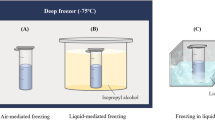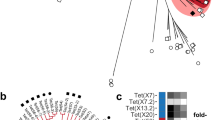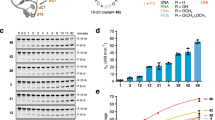Abstract
USE of unfixed frozen sections is confined to enzymes extremely sensitive to denaturation such as the dehydrogenases. Most authors on the subject state or imply that the method introduces the disadvantages of (1) mechanical disruption by freezing and thawing, (2) reduction in quality of tissue detail, (3) uneven section thickness, (4) diffusion of soluble enzymes and co-factors leading to loss of reproducibility and false localization, and (5) inability to cut serial sections1–6. These disadvantages are said to outweigh the advantages of high specificity and activity, and simplicity of preparation. The alternative method of briefly fixing sections overcomes many of these disadvantages at the expense of possible alteration in specificity and activity.
This is a preview of subscription content, access via your institution
Access options
Subscribe to this journal
Receive 51 print issues and online access
$199.00 per year
only $3.90 per issue
Buy this article
- Purchase on SpringerLink
- Instant access to full article PDF
Prices may be subject to local taxes which are calculated during checkout
Similar content being viewed by others
References
Gomori, G., Microscopic Histochemistry (University of Chicago Press, 1952).
Pearse, A. G. E., Histochemistry, p. 32 (Churchill, London, 1960).
Casselman, W. G. Bruce, Histochemical Technique, p. 25 (Methuen, London, 1959).
McManus, J. F. A., and Mowry, R. W., Staining Methods, p. 154 (Paul B. Hoeber Inc., N.Y., 1960).
Barka, T., and Anderson, P. J., Histochemistry, p. 5 (Harper and Row, N.Y., 1963).
Burstone, M. S., Enzyme Histochemistry, pp. 13, 17 (Academic Press, London, 1962).
Adamstone, F. B., and Taylor, A. B., Stain Technol., 23, 109 (1948).
Gomori, G., Proc. Soc. Exp. Biol. and Med., 42, 23 (1939).
Takamatsu, H., Trans. Soc. Path. Jap., 29, 492 (1939).
Grogg, E., and Pearse, A. G. E., Nature, 170, 578 (1952).
Gomori, G., Microscopic Histochemistry, p. 189 (University of Chicago, 1952).
Wachstein, M., and Meisel, E., J. Histochem. Cytochem., 4, 592 (1956).
Wachstein, M., and Meisel, E., Amer. J. Clin. Path., 27, 13 (1957).
Wyllie, R. G., Unpublished data.
Davis, B. J., and Ornstein, L., J. Histochem. Cytochem., 7, 297 (1959).
Nachlass, M. M., Tsou, K. C., De Souza, E., Cheng, C. S., and Seligman, A. M., J. Histochem. Cytochem., 5, 420 (1957).
Hess, R., Scarpelli, D. G., and Pearse, A. G. E., J. Biophys. Biochem. Cytol., 4, 753 (1958).
Kaplow, L. S., and Burstone, M. S., Nature, 200, 690 (1963).
Fishman, W. H., and Baker, J. R., J. Histochem. Cytochem., 4, 570 (1956).
Author information
Authors and Affiliations
Rights and permissions
About this article
Cite this article
WYLLIE, R. Fixation in Enzyme Histochemistry. Nature 207, 93–94 (1965). https://doi.org/10.1038/207093a0
Issue date:
DOI: https://doi.org/10.1038/207093a0
This article is cited by
-
Fixatives and fixation: a review
The Histochemical Journal (1969)



